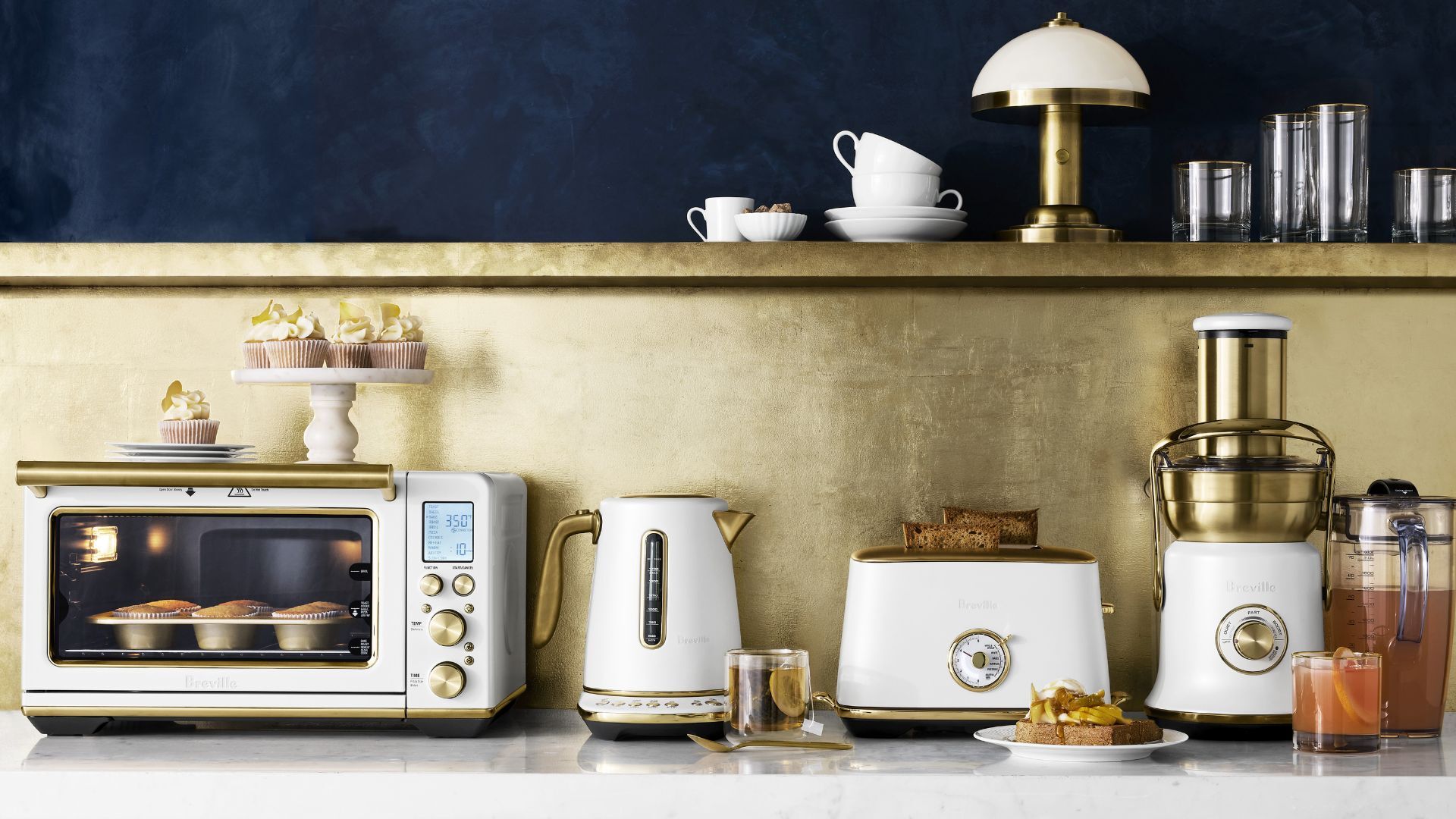How to clean a stainless steel pan and make it gleam
Here’s how to clean a stainless steel pan the easy way
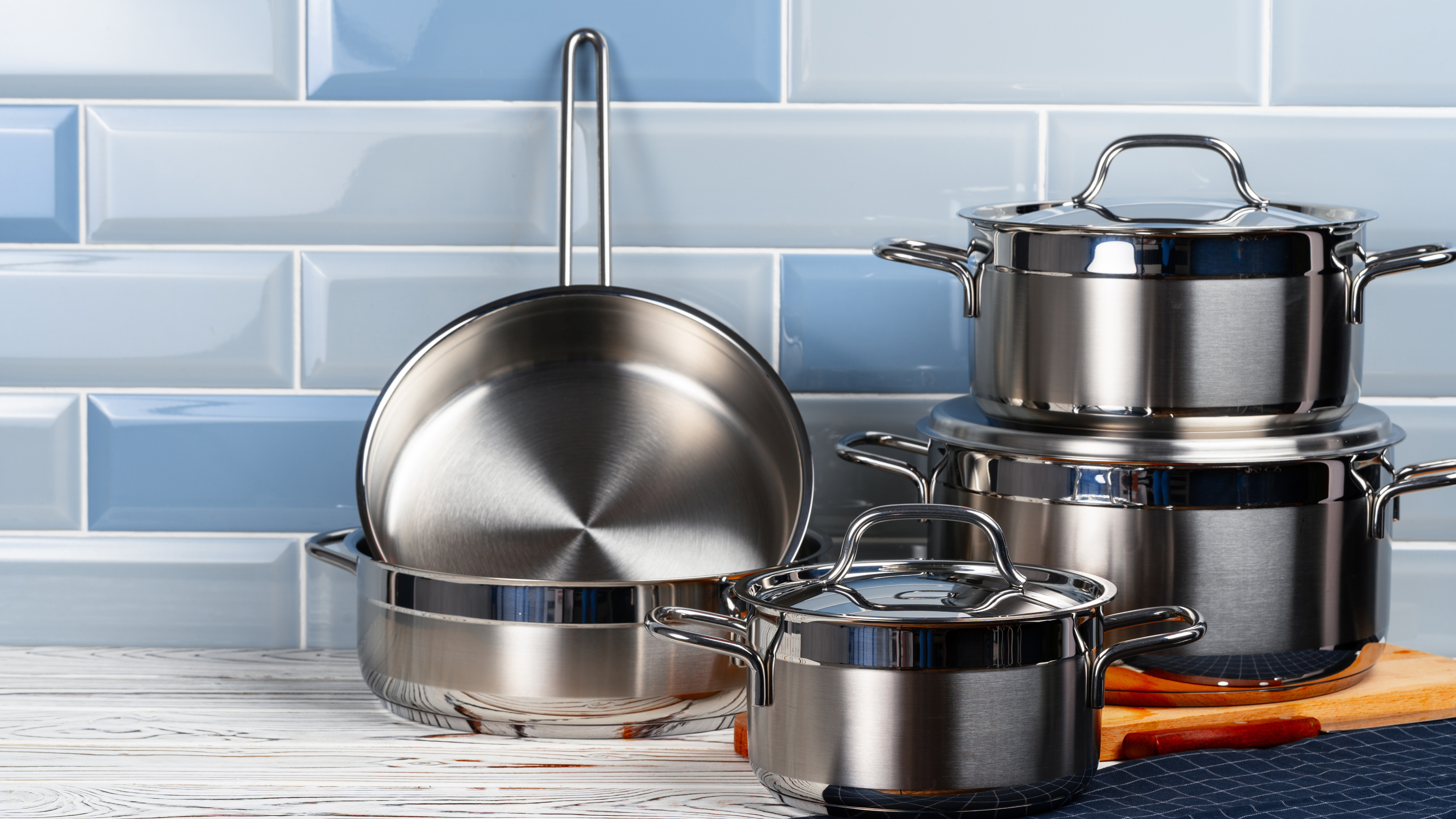
When it comes to knowing how to clean a stainless steel pan, unfortunately plain old dish soap and water won’t cut it. Stainless steel pans can build up an excess of burnt food debris and grease, both in the pan and on the base, which over time gets harder and harder to remove. As a result, your once pristine pan soon appears tired and a bit gross, and it seems like there’s little you can do to restore it.
But, before you go throwing away your trusty pan, you should know there are ways to remove these unsightly stains. Of course, care needs to be taken when cleaning stainless steel, but you can still do so without damaging the surface. Here, we take you through everything you need to know about cleaning a stainless steel pan and tips to keep it in tip-top shape going forward. Here’s how to clean a stainless steel pan.
How to clean a stainless steel pan
Dish soap
Microfiber cloths
Distilled white vinegar
Baking soda
Non-scratch scourer
Before we begin, always check the instructions supplied by your pan’s manufacturer and follow those if given. Depending on the construction of your stainless steel pan, extra care may be required when it comes to cleaning.
Everyday cleaning — Before we get into the nitty gritty, everyday cleaning should be covered. If you’ve been cleaning your pan using the wrong products or method in the past, this may be all you need to remove your stains.
Once you’ve finished using your pan, remove all traces of food debris as best you can. Then, leave it to cool until you can safely touch it and move it over to your sink for cleaning. Do not rinse or fill the pan with cold water while it’s still hot, otherwise the metal can warp and even crack — so you could damage your pan if you attempt to soak it right away. This is known as thermal shock.
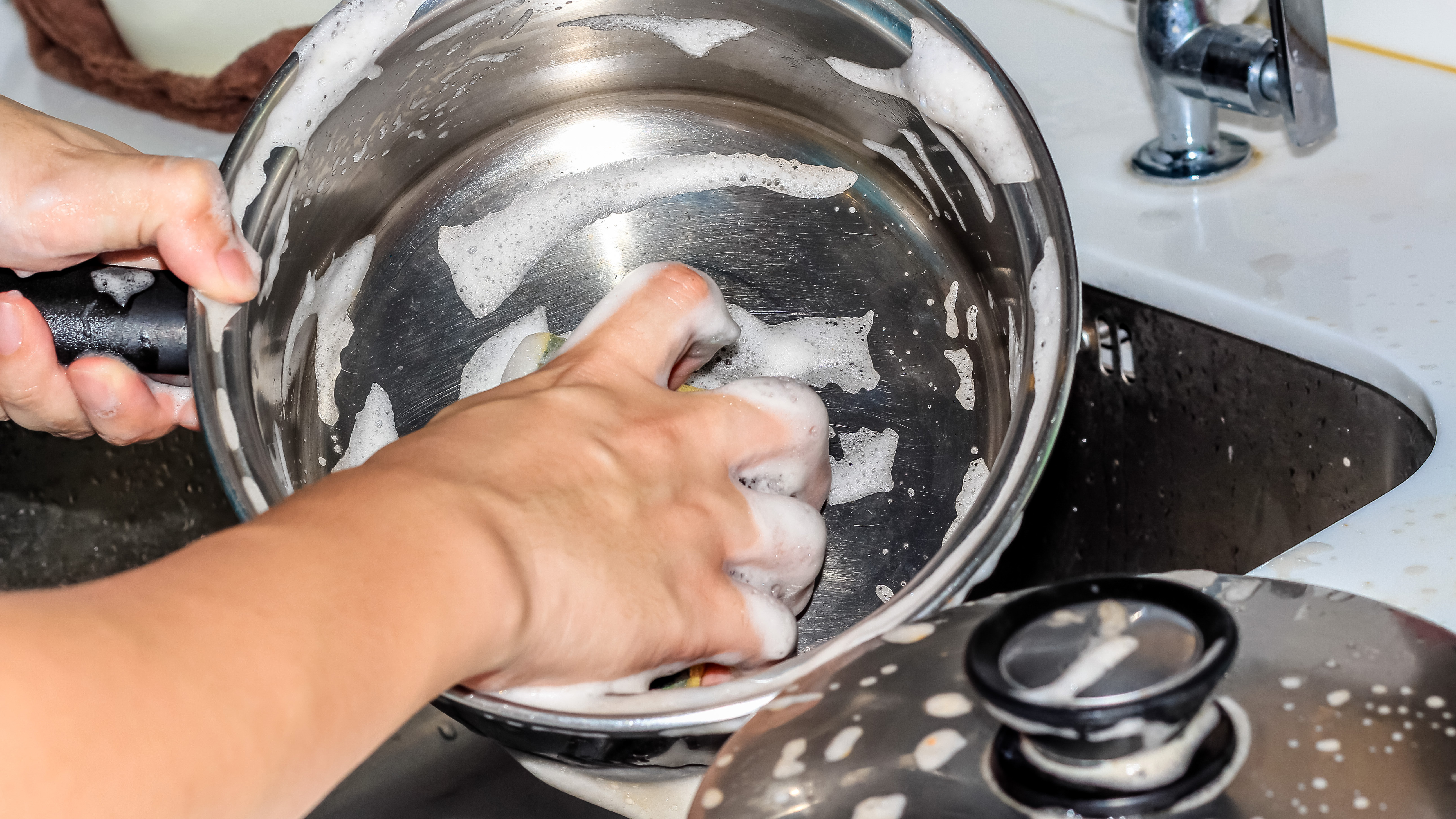
Wash your pan using warm, soapy water and a soft microfiber cloth, such as the Amazon Basics Microfiber Cleaning Cloths ($14.38, Amazon). It’s important that you don’t use anything more abrasive than that, such as scourers, as these can scratch stainless steel. As you clean, wipe in the direction of the grain to reduce water spots. Rinse and then dry your pan using microfiber cloths, and store in a way that it doesn’t come into contact with other pans.
Burnt on food — For tougher stains, you’re going to need a few more cleaning products and a little more elbow grease. Distilled white vinegar and baking soda both work wonders when it comes to cleaning, and they’re gentle enough that they won’t damage the stainless steel surface. Here’s what makes baking soda and vinegar so good at cleaning.
Sign up to get the BEST of Tom's Guide direct to your inbox.
Get instant access to breaking news, the hottest reviews, great deals and helpful tips.
First you need to add water to your pan — just enough to cover the burn marks on the base — then add one cup of distilled white vinegar to the mix. You might want to open a window or make sure the room is well ventilated, as this can smell quite strong. Following this, bring your solution to the boil on the stovetop and remove it as soon as it reaches temperature.
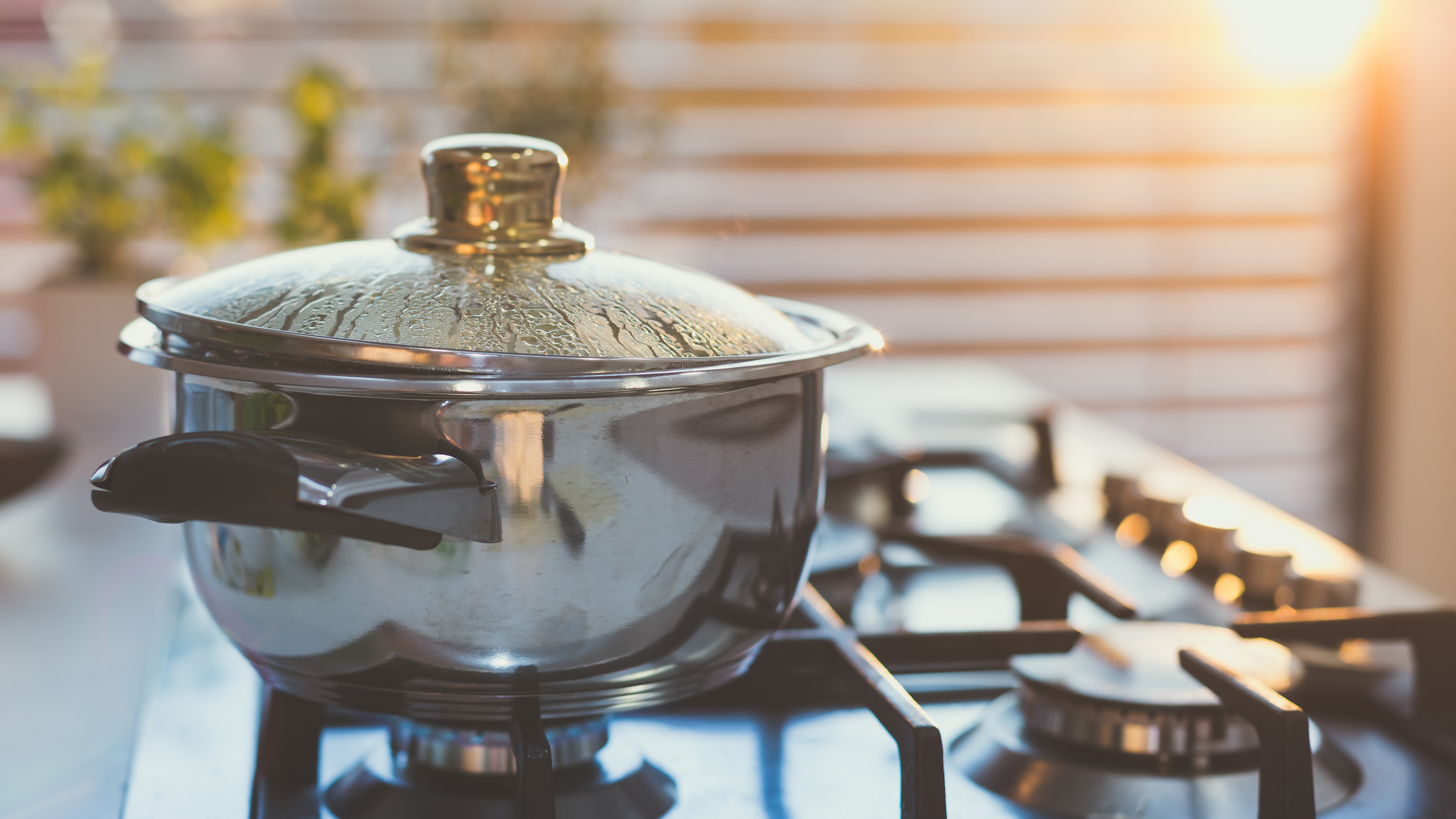
Now, you need to measure out two tablespoons of baking soda and add that to your vinegar/water solution. Be prepared for the solution to fizz for a few seconds as the vinegar and baking soda react. This chemical reaction actually contributes to the cleaning process, so it’s a good thing.
Leave the pan to cool before emptying out your cleaning solution and following the everyday cleaning instructions listed above. You can use a non-scratch scouring pad to help remove burnt on residue, such as these Scotch-Brite Non-Scratch Scour Pads ($7.28, Amazon). Don’t be discouraged if you don’t manage to remove all of the marks in one session. Persistence and patience are required when it comes to cleaning stainless steel and this method can be repeated as necessary.
Stains on the underside — If your pans are hanging on display, it can be quite annoying to see discoloration and stains on the underside. These scorch marks are made up of grease and food residue, and as they likely have been repeatedly baked on, they’re one of the most tricky stains to clean. However, the good news is that they can indeed be removed and all it takes is good old baking soda.
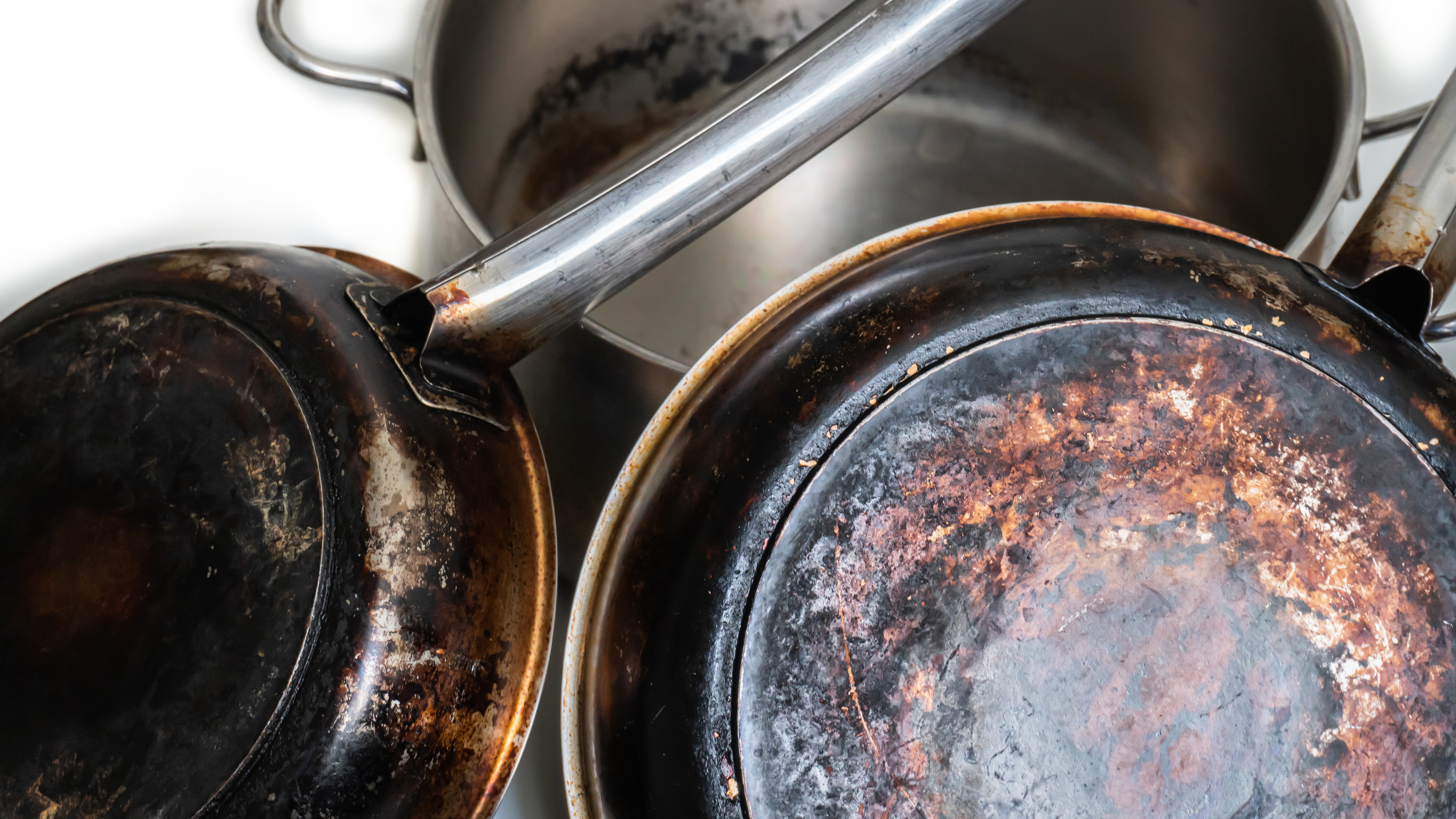
Combine one cup of baking soda with four tablespoons of water in a small bowl. This should form a thick paste, which isn’t too runny. Lay out a tea towel and flip your pan on top so you can easily see the scorch marks. Apply the paste to each of the marks using either a microfiber cloth or your fingers. Try to be generous and cover the marks entirely as you do this. Let the paste sit for 20 minutes and then spray it with distilled white vinegar, letting the chemical reaction do its job. You can now scrub the scorch marks away with a non-scratch scouring pad or a microfiber cloth. Repeat as necessary to get the bottom of your pan looking like new, then rinse and dry.
When cleaning stainless steel pans, you can alternatively use a dedicated stainless steel cleaner if preferred, such as the Bar Keepers Friend Superior Cookware Cleanser & Polish ($7.99, Amazon). Although, make sure your cleaners are indeed suitable for stainless steel, along with any tools you use in the process.
Care tips for stainless steel pans
- Store your pans properly so they’re not making contact and scratching one another.
- Do not wash a stainless steel pan until it has completely cooled to prevent warping.
- Deep clean your stainless steel pan when required to keep on top of stains.
- Always clean in the direction of the grain so you don’t accidentally scratch the surface.
- Always use suitable cleaning products and tools.
- Dry your stainless steel pan straight after washing to avoid water marks.
- Only add salt to water in the pan once it has boiled. This prevents pitting corrosion.
For more tips and tricks, check out our guides on how to clean cloudy glasses, why your cutlery is rusty and how to restore it and how to clean stainless steel.

Katie Mortram used to be a Homes Editor for Tom's Guide, where she oversaw everything from kitchen appliances to gardening tools, as well as smart home tech. Specializing in providing expert advice for cleaning and home manintenance, she now works as Household Advice Editor for Good Housekeeping.
